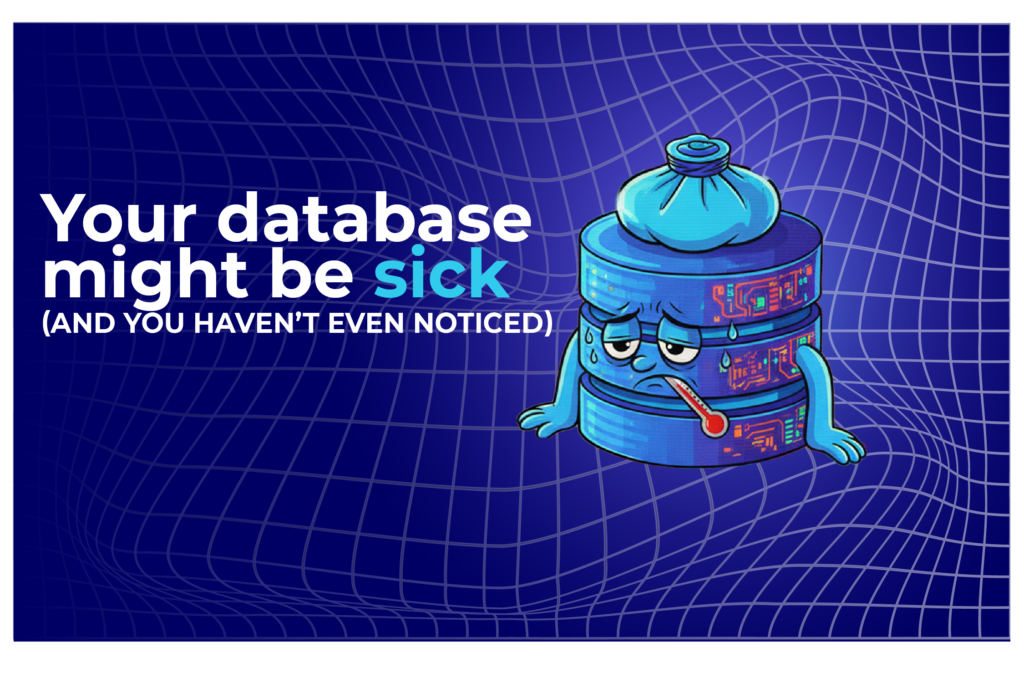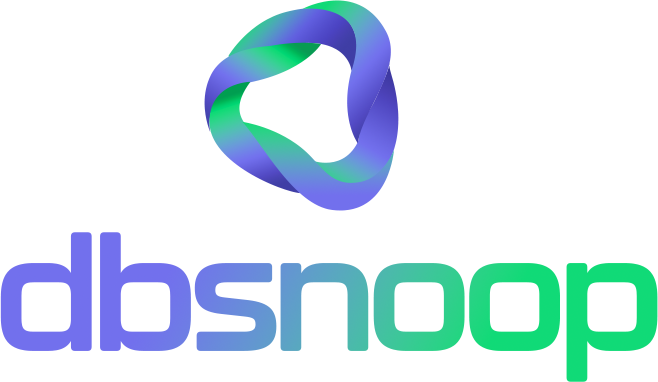

Your database, the beating heart of your digital operation, may be suffering from a chronic and silent disease. And the worst part is, the tools you use to measure its health are, at best, thermometers. They are great at detecting an acute fever—a CPU spike, a total system crash—but they are completely blind to the chronic conditions that develop slowly beneath the surface. Subtle performance degradation, inefficient resource consumption, and intermittent instability are the true villains of business continuity because they don’t trigger red alarms.
They simply make your system slower, more expensive, and less reliable with each passing day. For SRE and DBA teams, this manifests as a state of perpetual frustration, hunting for performance “ghosts” in a system that, according to the dashboards, appears “healthy.” For the business, the result is a silent erosion of the customer experience and profit margins. This article details the symptoms of these chronic diseases, explains why traditional monitoring fails to diagnose them, and how dbsnOOp’s predictive observability acts as an advanced diagnostic tool to treat the cause, not just the symptom.
Common Symptoms of a “Chronic Disease” in the Database
A chronic disease rarely manifests with a catastrophic failure. It reveals itself through a series of subtle and persistent symptoms that degrade the system’s quality of life.
Symptom 1: The Persistent “Low-Grade Fever” (Silent Query Degradation)
This is the most common and most dangerous symptom. A query that was perfectly healthy and efficient when it was deployed begins to get sick as the data grows.
- The Cause: The query’s execution plan, which is the “map” the database uses to find the data, becomes obsolete. An index that was once useful is now ignored by the optimizer, forcing a full table scan that is exponentially more expensive.
- The Impact: Application latency increases by milliseconds. Imperceptible at first, but this cumulative increase, over millions of executions, results in a noticeably slower system. It is the root cause of the universal complaint: “the system used to be faster.”
Symptom 2: The “Slow Metabolism” (Inefficient Cloud Resource Consumption)
Your system may be working, but at what cost? Inefficient queries are voracious resource spenders.
- The Cause: To execute a bad execution plan, the database consumes far more CPU cycles, performs many more disk I/O operations, and requires more memory to process the data.
- The Impact: In a cloud environment, where you pay for what you consume, this inefficiency translates directly into higher AWS, Azure, or GCP bills. Your company is paying a premium to run suboptimal code. Even worse, in systems with auto-scaling, the infrastructure can mask the disease by adding more resources, hiding the performance problem at the cost of continuous financial “bleeding.”
Symptom 3: The “Arrhythmia” (Intermittent Instability from Contention and Locking)
The system works well most of the time, but occasionally “hiccups” or “freezes” for a few seconds, with no apparent reason.
- The Cause: Resource contention, especially lock waits. Multiple processes try to access and modify the same block of data at the same time, forming an invisible “queue.” A heavy analytical query can place a lock on a table that prevents sales transactions from completing.
- The Impact: The user experience becomes unpredictable and frustrating. These “freezes” can cause application timeouts, corrupt transactions, and, in high-concurrency scenarios, lead to a cascading effect that paralyzes the system.

The Diagnostic Failure of Traditional Monitoring
If the symptoms are so clear, why don’t traditional tools diagnose them? Because they were designed to measure vital signs, not to understand the complex interaction between them.
Dashboards are Optometrists, Not Cardiologists: They are great for seeing the surface, but they can’t see the heart of the problem. A dashboard can show high disk latency, but it cannot correlate that metric with the specific query that is causing it. It shows the isolated symptom, without the necessary context for a diagnosis.
Threshold Alerts Detect Heart Attacks, Not Heart Disease: A “CPU > 90%” alert tells you the patient is having a heart attack. It doesn’t tell you that the patient’s arteries (inefficient queries) have been slowly clogging for months. The reactive model is, by definition, incapable of prevention.
Manual Investigation is Slow and Invasive: Without an advanced diagnostic tool, the only way to find the root cause is through a manual “biopsy”: enabling detailed traces, collecting massive logs, and spending hours (or days) in a forensic analysis. This process is slow, expensive, and often inconclusive.
The dbsnOOp Approach: Advanced Diagnostics for Database Health
To treat a chronic disease, you need to go beyond the thermometer. You need an MRI, an echocardiogram, and a genetic panel. The Autonomous DBA from dbsnOOp is that advanced diagnostic suite for your data assets.
The “Continuous Electrocardiogram”: Predictive Analysis with AI-Powered Baselines
Instead of checking vital signs every hour, dbsnOOp monitors the “heartbeat” of your database in real time, 24/7.
- How It Works: The platform’s AI learns the normal rhythmic patterns of your system, creating a dynamic and contextual baseline. It knows how your database’s “heart” behaves under different levels of stress (peak hours vs. early morning).
- The Diagnosis: With this baseline, the AI detects the “arrhythmias”—the subtle anomalies and degradation patterns that are the first signs of a chronic disease. It doesn’t wait for the 40-degree fever; it detects the persistent low-grade fever and flags it as a risk.
The “MRI”: 360-Degree View and Top-Down Diagnosis
To understand a complex problem, you need to see the whole system, not just a part. dbsnOOp’s 360-Degree View and its Top-Down Diagnosis provide this complete picture.
- How It Works: The platform correlates metrics from all layers in real time. It connects the user’s complaint (“the application is slow”) with the technical symptom (“high disk latency”) and the fundamental root cause (“this specific query is doing a full table scan”).
- The Diagnosis: This eliminates the need for manual investigation and the blame game between teams. The “MRI” shows the clear and indisputable picture of what is happening, allowing the team to focus on the solution, not the search for the culprit.
The “Genetic Analysis”: AI-Powered Tuning and Execution Plan Analysis
To truly treat a disease, you need to understand its cause at the most fundamental level. In the world of databases, that is the query’s execution plan.
- How It Works: The AI-Powered Tuning functionality of dbsnOOp goes beyond identifying the slow query. It dissects its “DNA”—the execution plan—to find the “mutation” that causes the inefficiency.
- The Diagnosis and the Prescription: The AI doesn’t just say “this query is sick.” It provides the precise diagnosis (“the optimizer is choosing a bad index due to stale statistics”) and the prescription for the cure (“run a statistics update and consider creating this new index to optimize data access”).
The Treatment and Prevention: The Impact of a Healthy Database
Adopting a predictive observability approach with dbsnOOp is the equivalent of swapping a reactive emergency room for a wellness and preventive medicine program. The impact goes far beyond IT.
- Financial Health: An optimized database consumes fewer cloud resources, resulting in a direct and measurable reduction in operational costs (OpEx). Preventing “brownouts” and downtime protects revenue.
- Operational Health: With fewer fires to put out, the IT team can dedicate themselves to higher-value projects. The system’s stability and predictability increase, improving the productivity of the entire company.
- Team Health: The end of the reactive stress cycle reduces burnout and increases job satisfaction, helping to retain the most critical talent.
Your dashboards may be green, but that doesn’t mean your database is healthy. It may just mean you don’t have the right diagnostic tool to see the disease developing beneath the surface.
Want to solve this challenge intelligently? Schedule a meeting with our specialist or watch a live demo!
Schedule a demo here.
Learn more about dbsnOOp!
Learn about database monitoring with advanced tools here.
Visit our YouTube channel to learn about the platform and watch tutorials.

Recommended Reading
- What is query degradation and why does it happen?: This article is a deep dive into the most common symptom of a “database disease”: silent query degradation. It provides the essential technical context to understand why prevention is so critical and how dbsnOOp’s AI diagnoses this chronic condition.
- When are indexes a problem?: The treatment for a “sick” database often involves optimizing indexes, but the wrong prescription can worsen the condition. This post details the nuances of indexing, contextualizing the intelligence that dbsnOOp’s AI uses to recommend the correct treatment.
- 24/7 monitoring of databases, applications, and servers: A system’s health is holistic. A problem that manifests as an “arrhythmia” in the database may have its origin in an “infection” in the application layer. This article reinforces the need for dbsnOOp’s complete diagnostic approach to ensure the health of the entire ecosystem.

